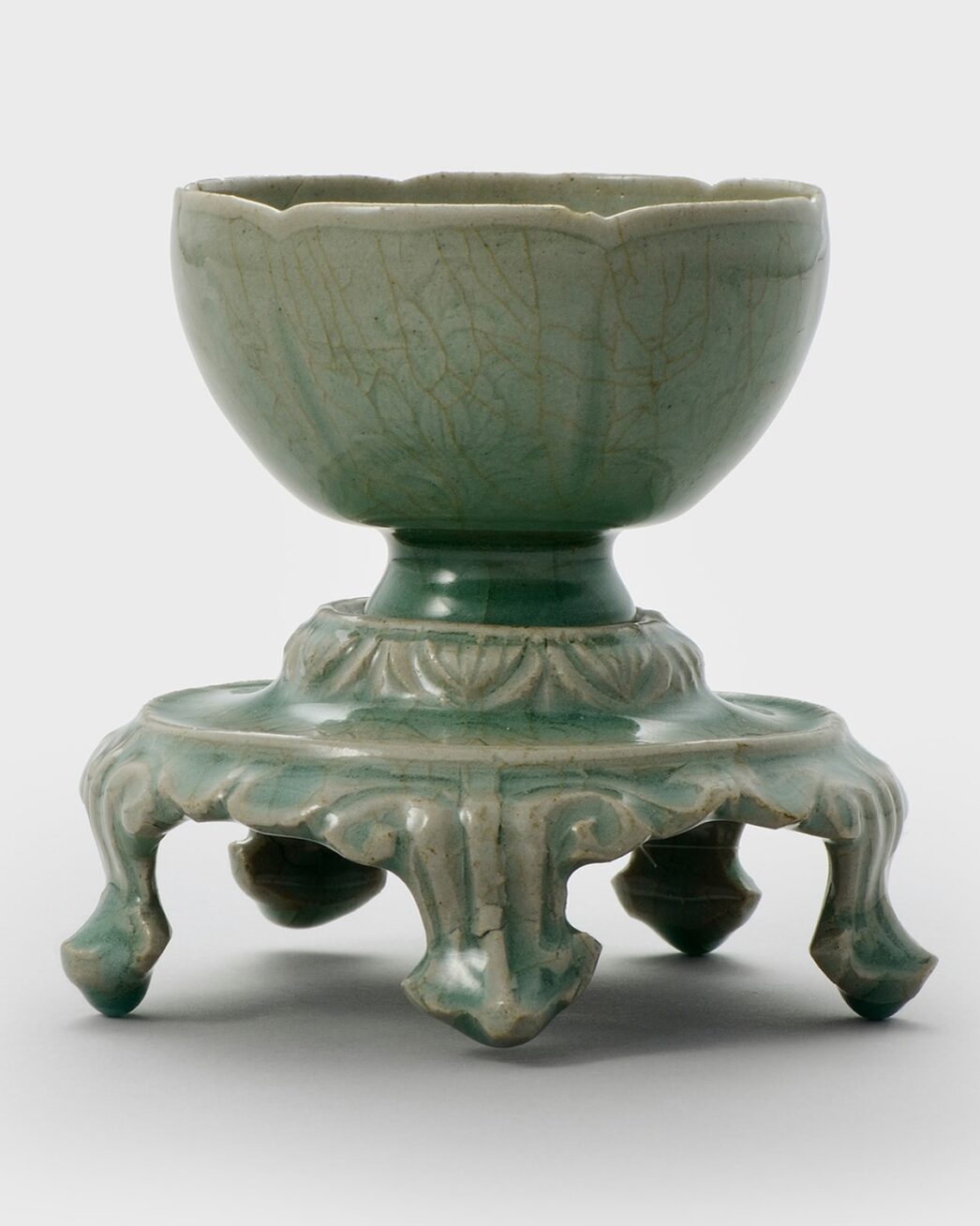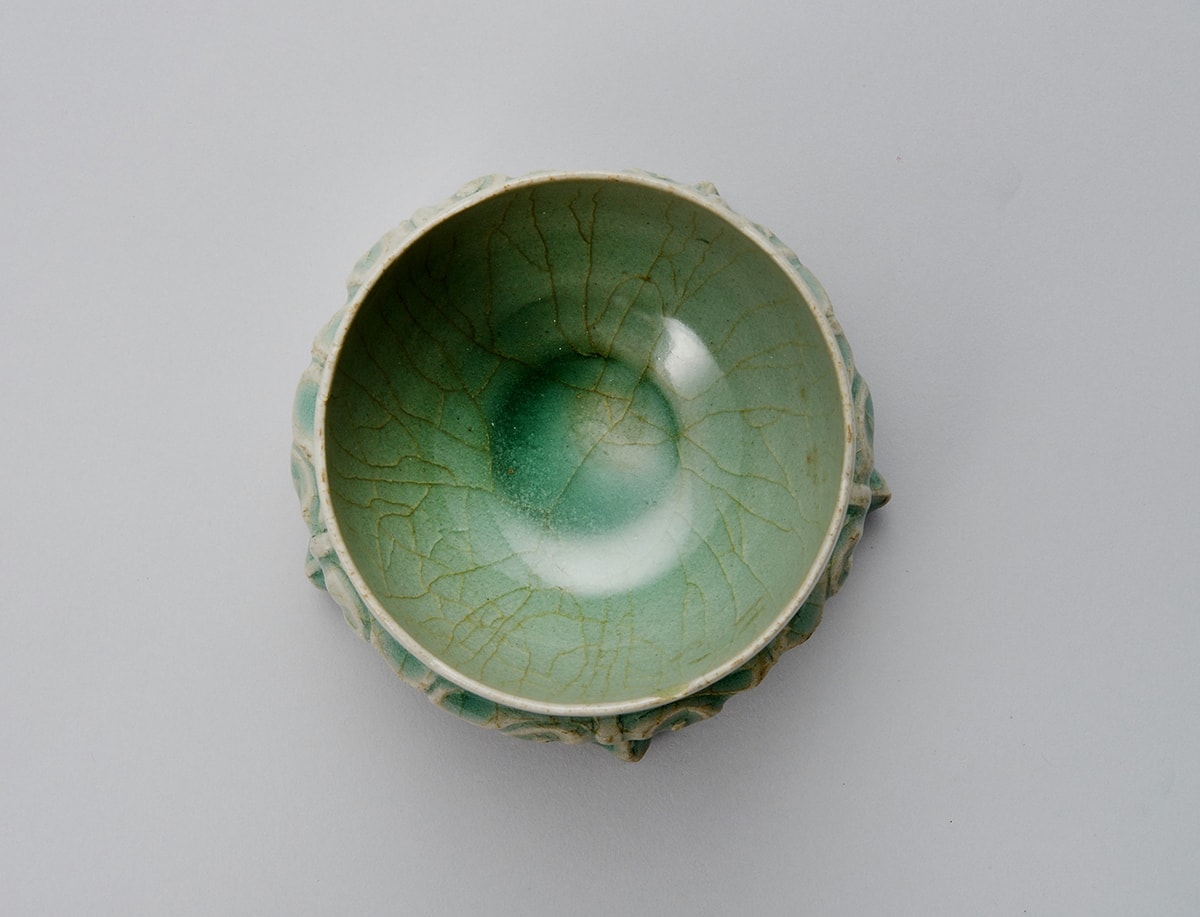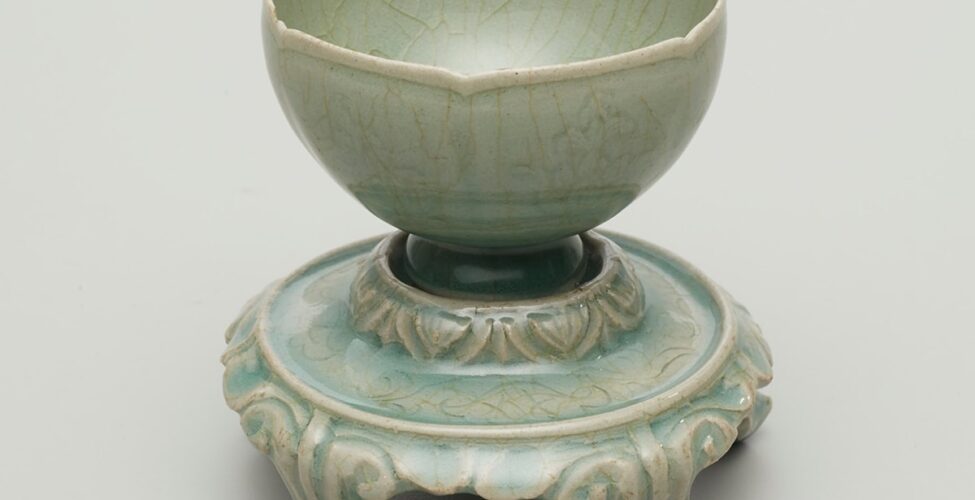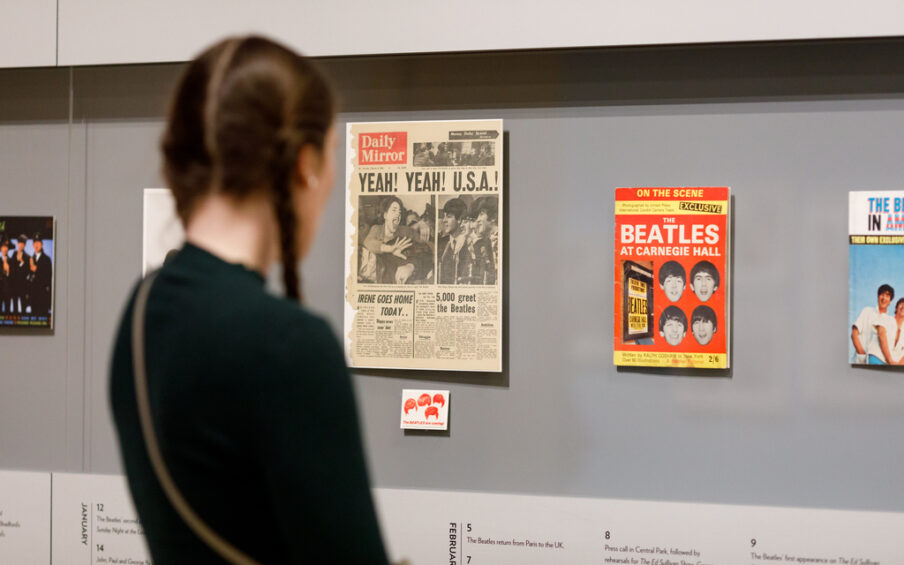One of the finest objects in our Korean art collection is one of the smallest, at only 4 inches high. This exquisite celadon cup forms the shape of an open flower with six petals. Crackles in the glaze were caused as the vessel cooled after firing. Underneath the crackles, you can see graceful, lightly carved designs of lotus sprays on each lobe of the cup. The raised stand is ornately decorated with inverted lotus petals surrounding an inner support ring and scrolling leaf designs on each the five legs. Both cup and stand are covered in transparent green glaze. Inside the cup, the glaze has pooled slightly, creating a brilliant jade color.
The elegant shape and decoration of this set exemplifies court taste for understated luxury in the 12th century. Due to the refined shade of the glaze, researchers from the National Museum of Korea identified the kilns of Sadang-ri, Gangjin, as the likely place of production—kilns known for producing outstanding jade-colored celadons of the Goryeo period (918–1392).
—Jeannie Kenmotsu, The Arlene and Harold Schnitzer Curator of Asian Art


Korea, Jeollanam-do province, Gangjin kilns, Sadang-ri (Korean), Foliated Cup and Stand with Floral Décor, Goryeo period (918–1392), 12th century. Light gray stoneware with incised and molded decoration under blue-green celadon glaze. The John Yeon Collection; Gift of Richard Louis Brown, 2014.177.1a,b



